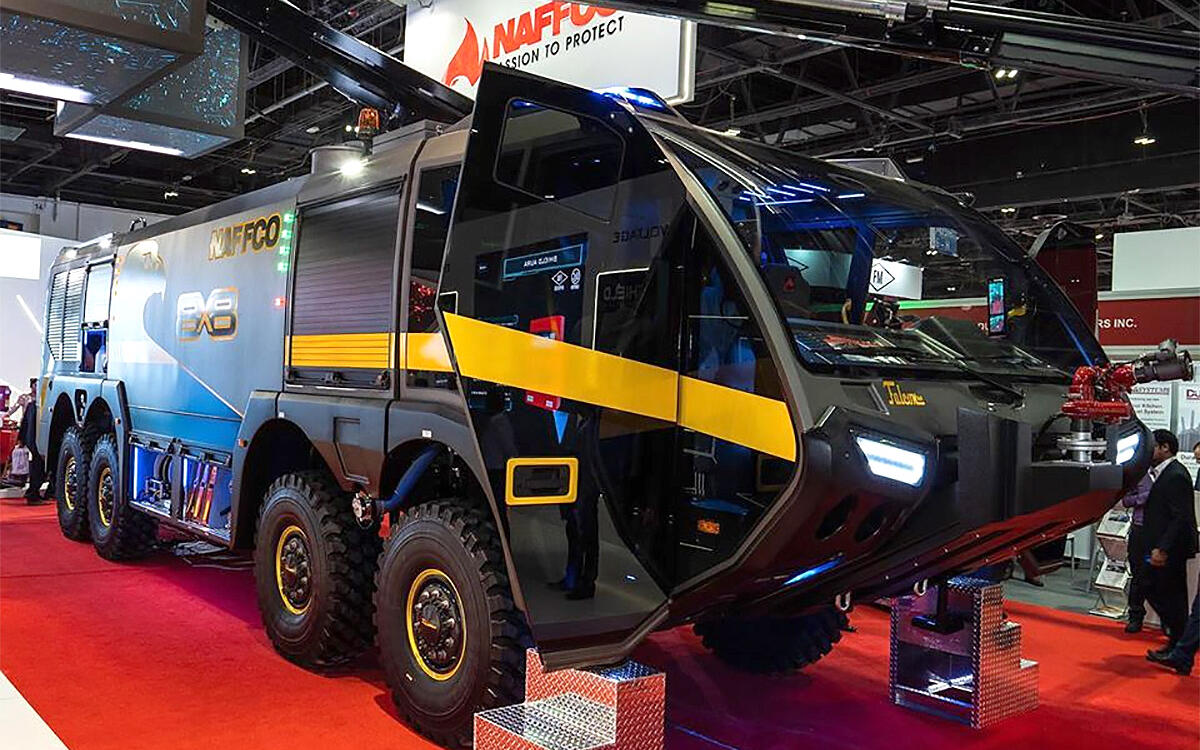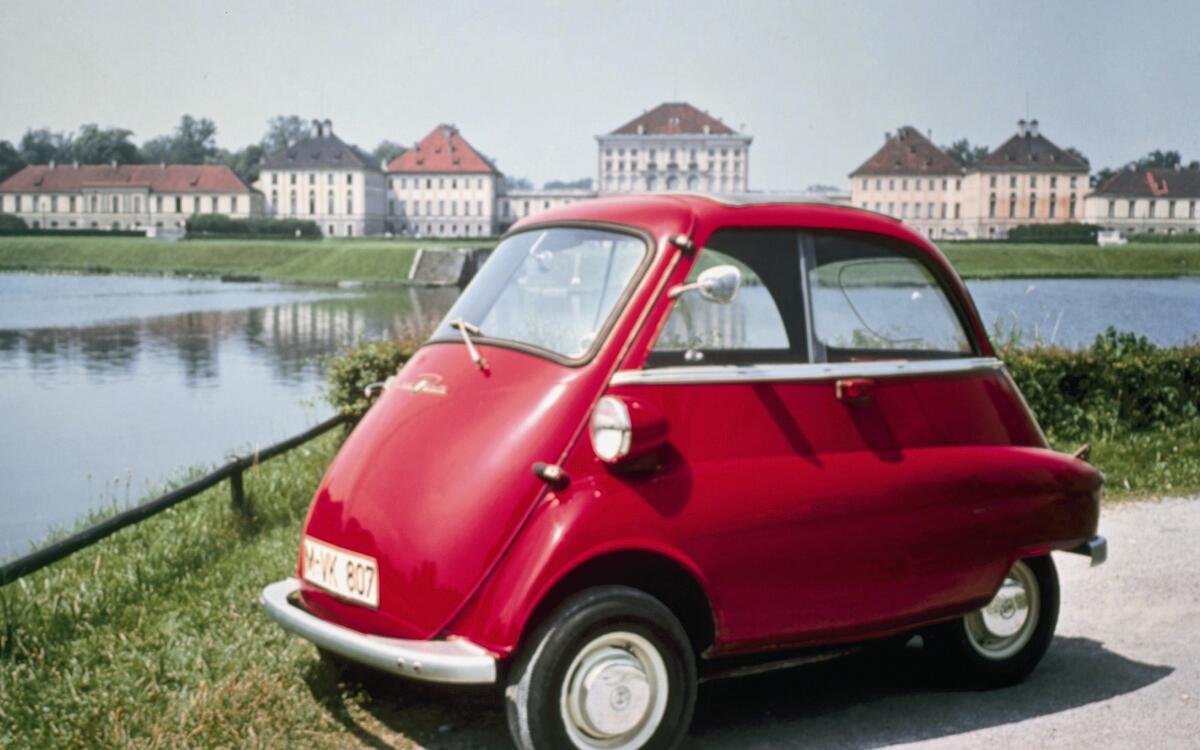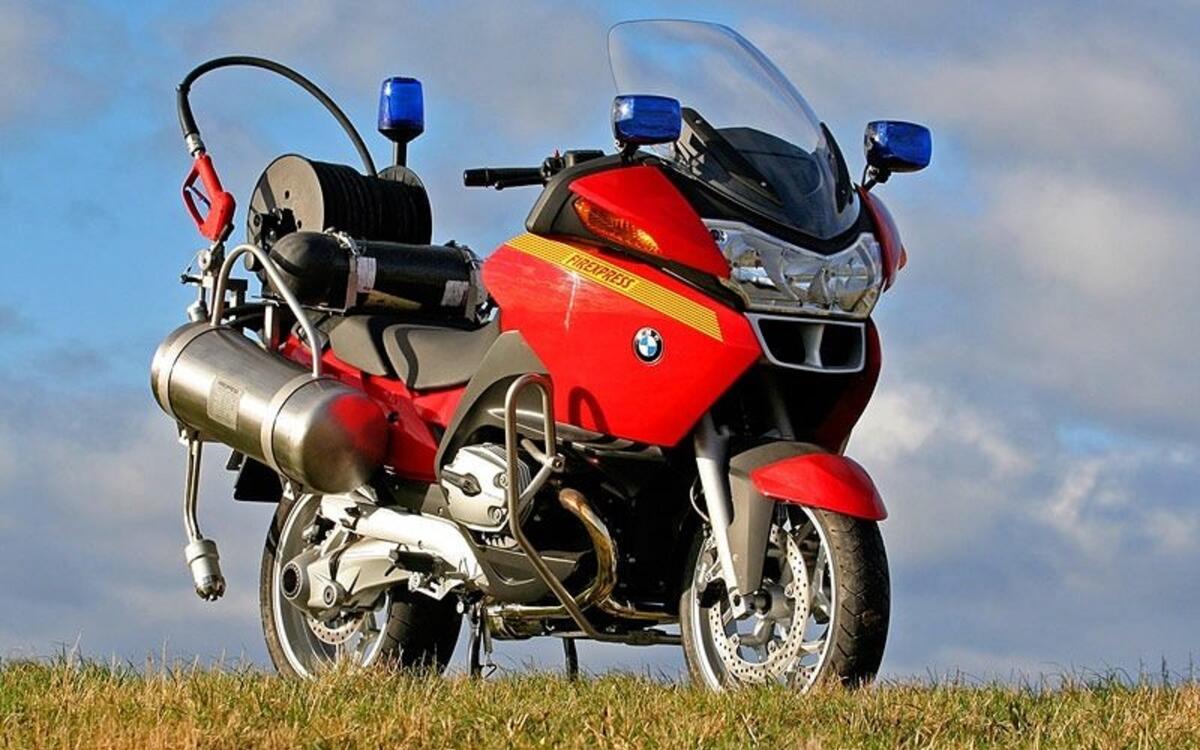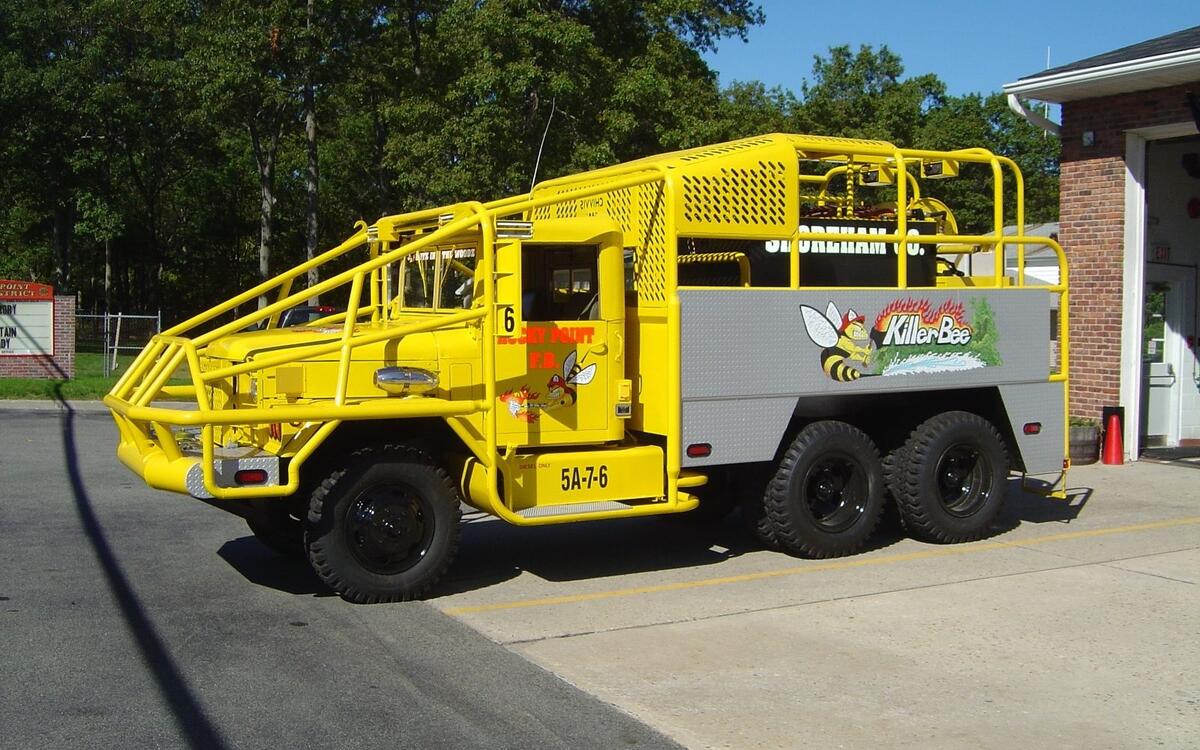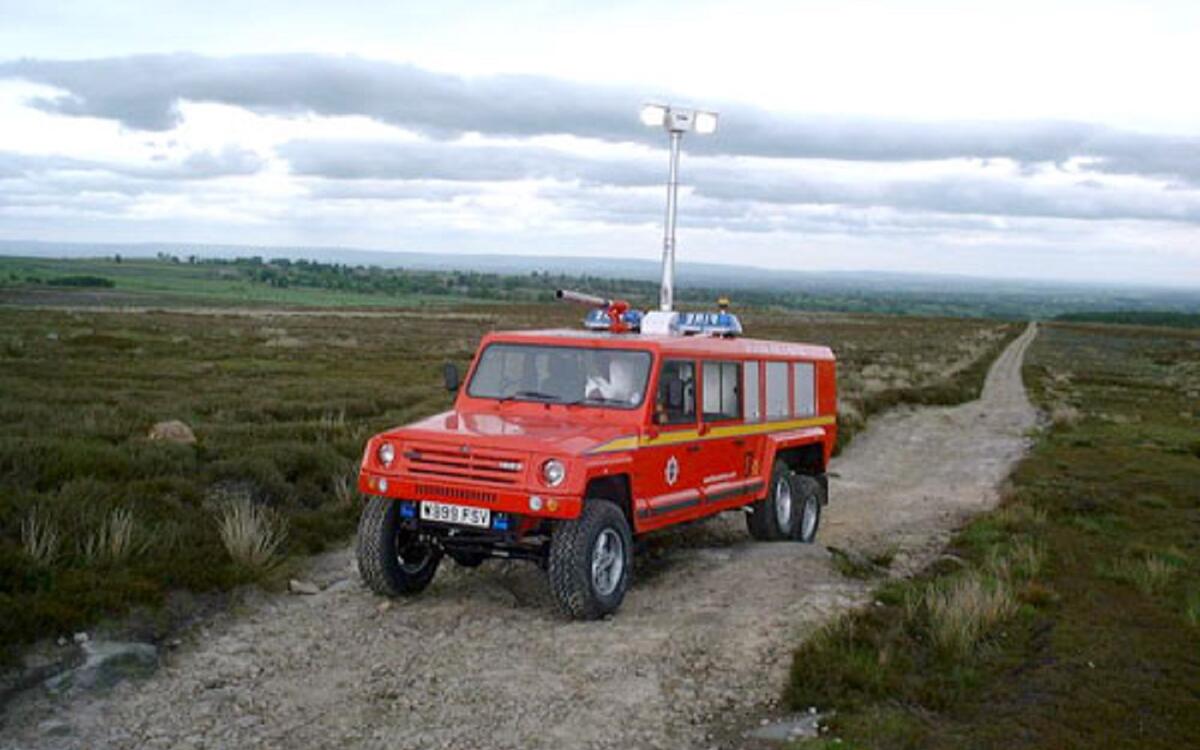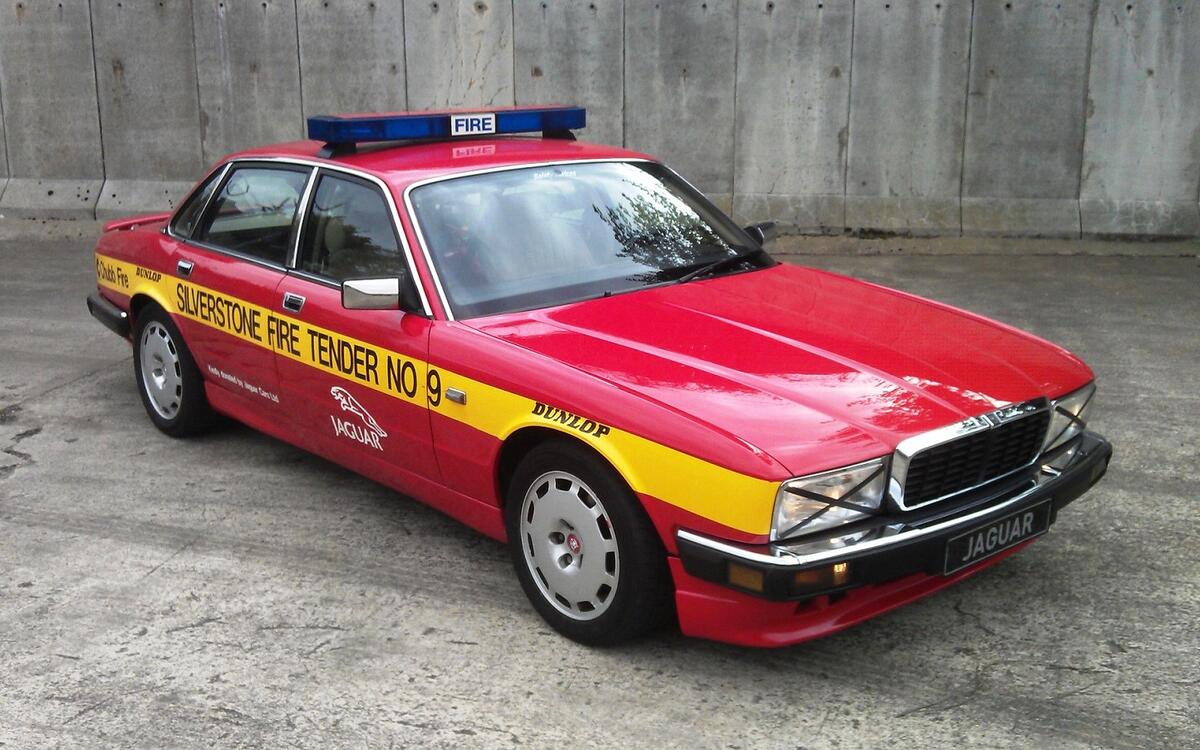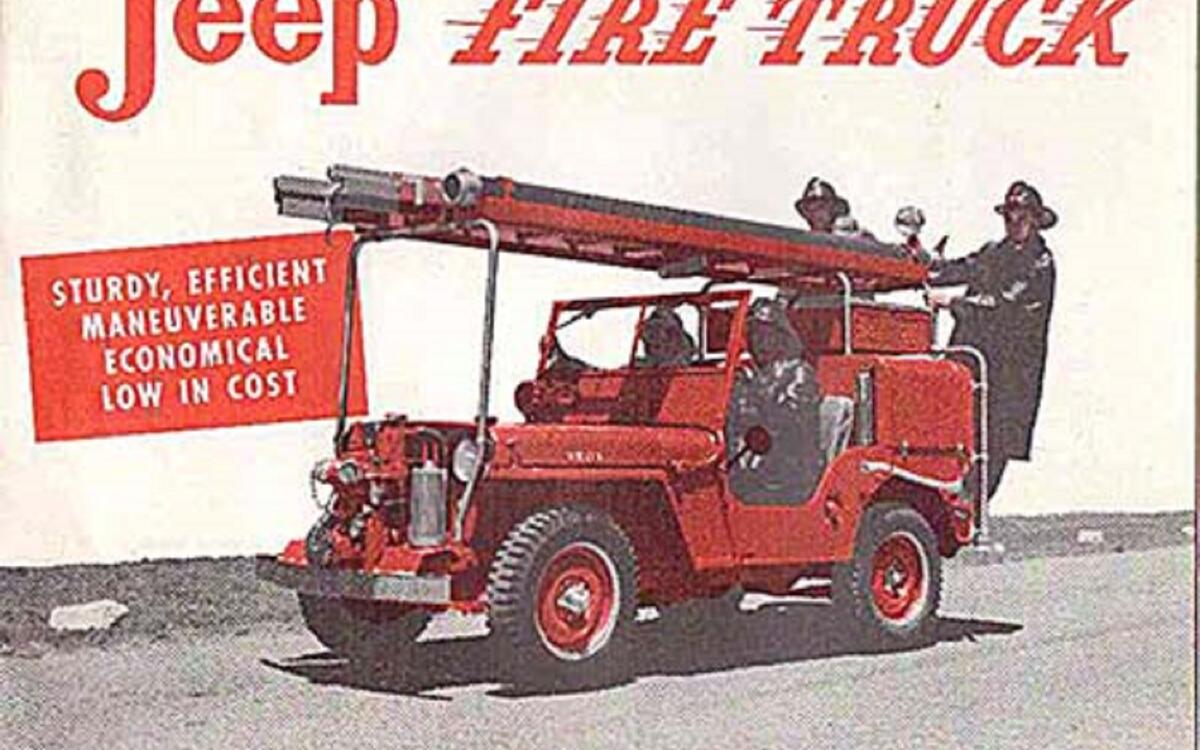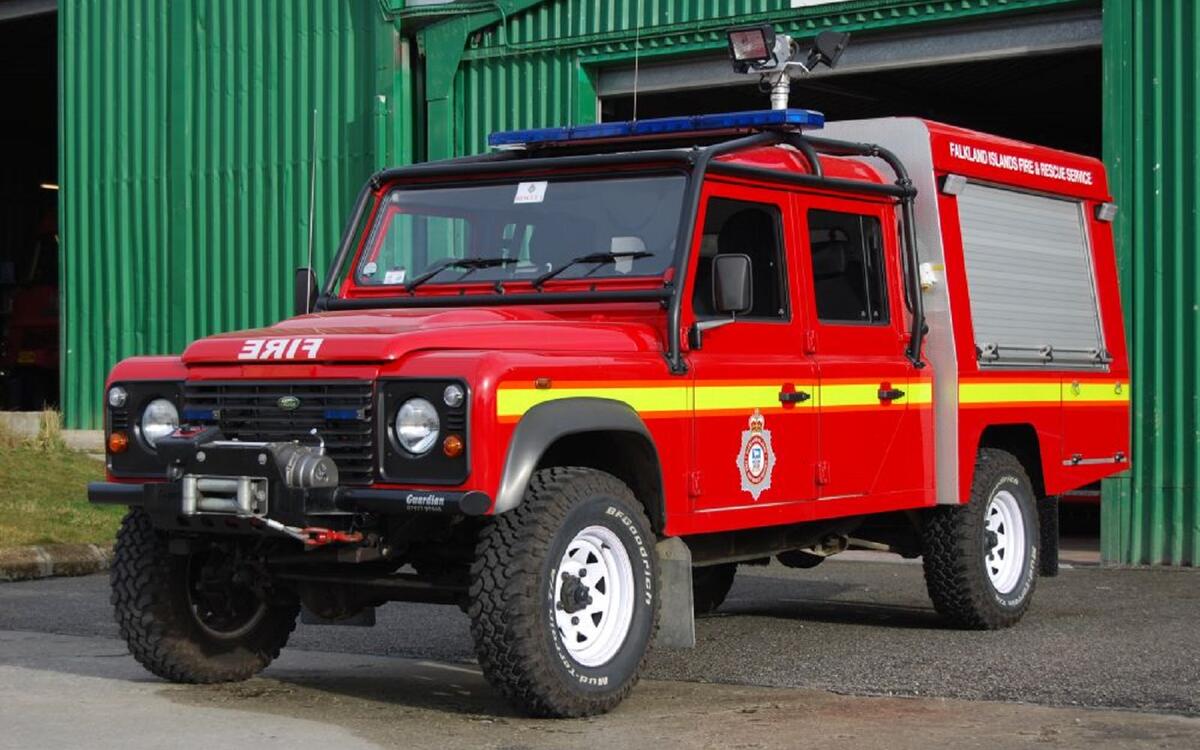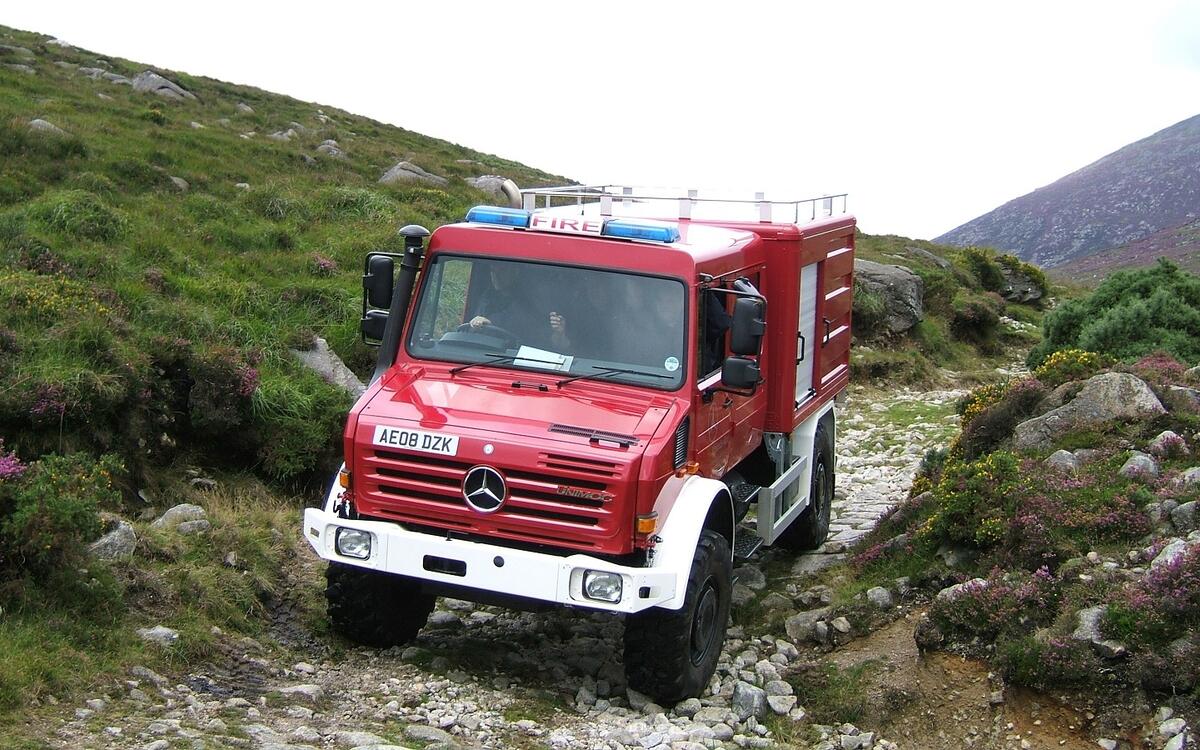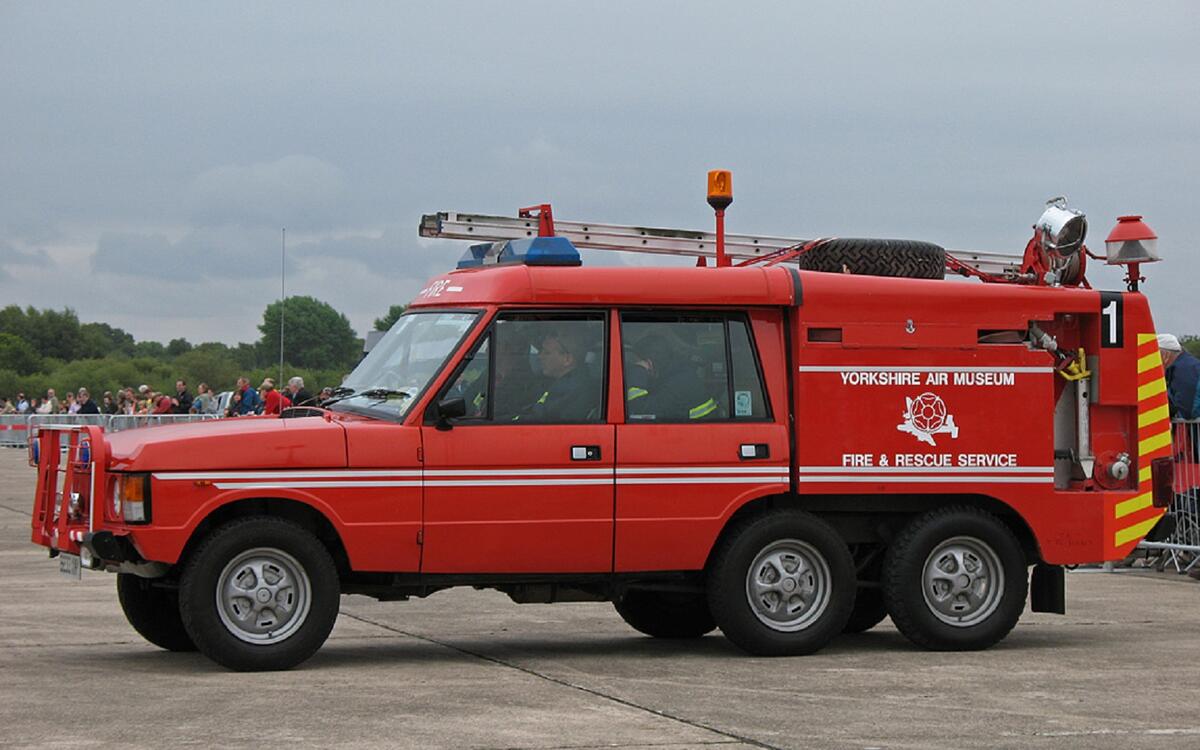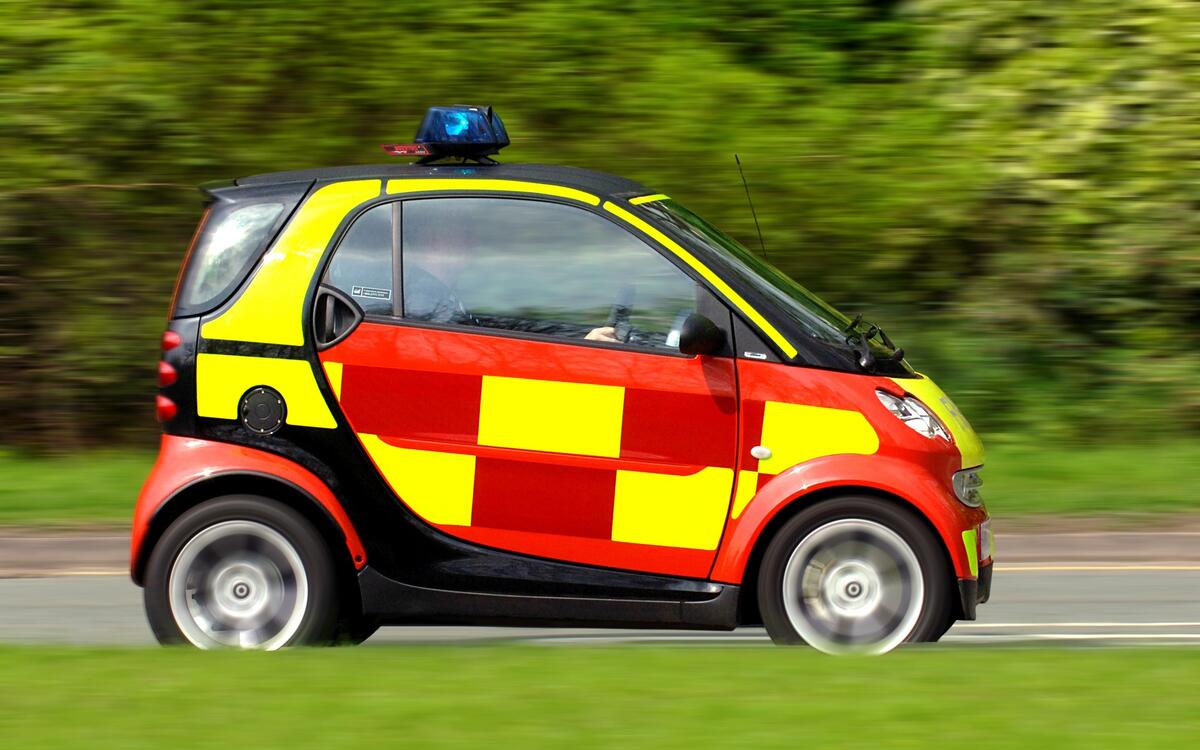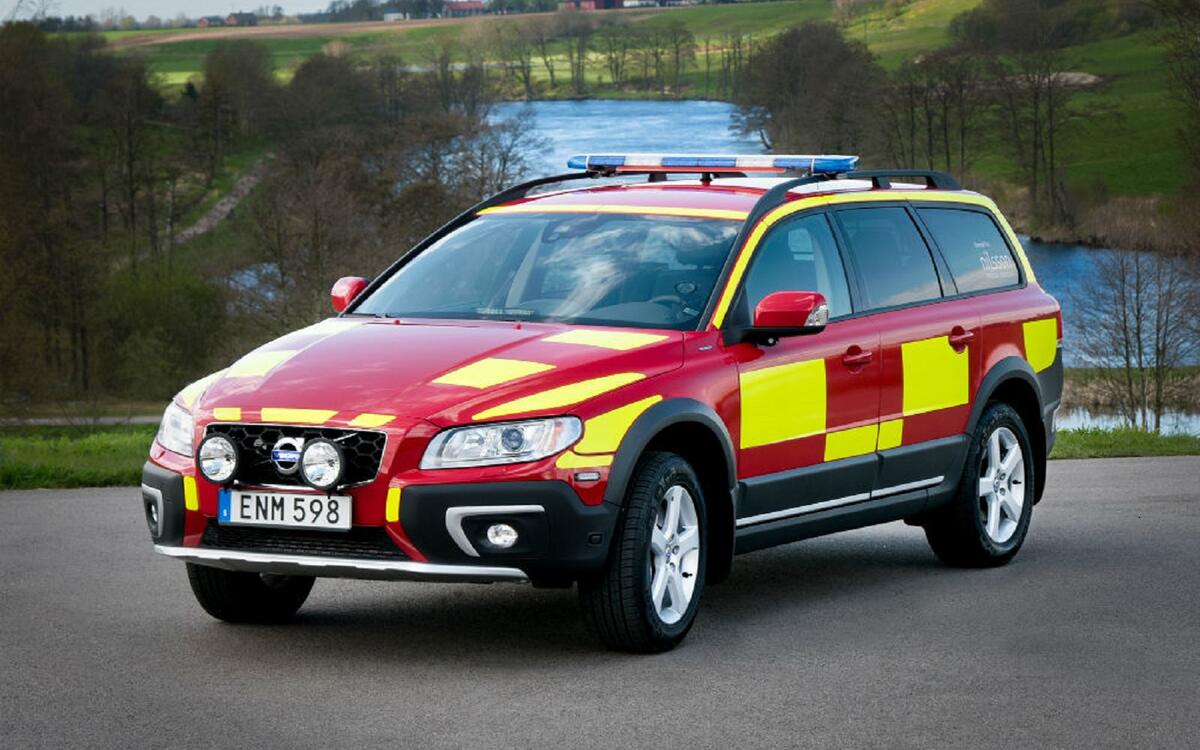 Slide of
Slide of
You’re looking at the world’s largest airport fire fighting machine.
And as fire trucks on airports are much larger than normal ones, then that means this is the world’s largest full stop. Why are they so large? Well, firstly, they can be. After all, length and width are hardly considerations in the wide open spaces of an airport. Secondly, they really need to be.
Potentially needing to douse the flames of a large airliner and all the fuel it carries, this new NAFFCO Falcon 8 can carry 16,000 litres of water and 1920 litres of fire-retardant foam. Dubai-based NAFFCO unveiled the new vehicle last week at the Intersec 2020 trade show. Its considerable bulk is hauled around by two engines with an output of around 1400bhp.
The Falcon is just the latest in a long line of intriguing fire-fighting machines - here’s our pick of the weird, wonderful and adaptable world of fire fighting vehicles:
 Slide of
Slide of
Bedford Green Goddess
The Bedford RLHZ Self Propelled Pump doesn’t sound quite as catchy as Green Goddess, so no wonder the British military adopted the pet name for this rugged. Available in two- and four-wheel drive, this 4.9-litre machine went into service in 1953 and stayed there for over 50 years. It could carry six crew and 600 gallons (2728 litres) of water at up to 65mph, though no power steering made it something of a workout for its driver.
Despite this, the Green Goddess was called on to provide cover during firefighter strikes in 1977 and 2002, when they were operated by the Army; a fleet of 900 was maintained for this purpose, but in 2004 they were deemed obsolete and most of the fleet was sold to developing countries, mostly in Africa.
 Slide of
Slide of
BMW Isetta
You wouldn’t want to rely on an Isetta Feuerwehr if your house was ablaze as the tiny BMW bubble car could barely carry two firefighters, never mind any equipment. Some towed a trailer with a hose and there were even ladders mounted on the roof, but the 250- or 300cc engines had their work cut out to pull this lot.
The real reason for the Isetta’s use was to reach incidents in tightly packed city streets before the main appliance could get on scene.
 Slide of
Slide of
BMW R1200 RT
In a similar fashion to its Isetta ancestor, the BMW R1200 RT Firexpress was built to reach locations in double quick time. With a top speed of 90mph even when fully laden with 60-litres of water or flame retardant foam, the nimbleness of the motorcycle was ideal for busy urban streets or congested autobahn.
The hose could spray up to five metres with a lance that could be reached from the saddle. Greece proved a popular market for this two-wheeled fire tender due to the clogged city centre of its capital, Athens.
 Slide of
Slide of
Bronto Skylift
Just the name is enough to conjure up an image of a fire-busting vehicle capable of dealing with the tallest buildings. The Bronto Skylift platform can extend up to 112 metres into the air and was introduced to tackle blazes in high-rise apartment blocks and skyscraper offices. It can be mounted on a variety of different chassis and, despite its huge reach, the Finnish design folds down into a very compact size thanks to concertina sections.
 Slide of
Slide of
Brush 5A7-6
This leviathan is more colloquially known in the USA as a ‘stump jumper’ because its forte is dealing with forest fires. That requires it to be able to traverse terrain where roots and trees litter the ground, so the 6x6 drivetrain offer superb traction and ground clearance. As this fire tender operates in some very hostile environments, it comes with a massive external cage to prevent falling branches from harming the crew.
 Slide of
Slide of
Hagglund BV206
Based on the same tracked vehicle that has been used by the British Army and many other military forces wherever snow or otherwise impassable bogs are encountered, the Hagglund BV206 is truly go-anywhere. Both the tractor and trailer units are powered and their articulation allows for incredible off-road ability. Some came with the same 2.8-litre V6 as the (European) Ford Capri, while others used a Rover V8. A more likely power source is now a six-cylinder turbodiesel.
 Slide of
Slide of
Hummer H1
The Hummer H1 lends itself very well to the job of fire tender thanks to its considerable size and excellent off-road skill. In the USA, it’s found favour in mountainous and heavily forested regions as it can deal with brush fire quickly. The large rear section can carry 600-litres of water plus other equipment, but the cabin only has space for two crew.
GM acquired the rights to sell a civilian version of the H1 in the 1990s, and later introduced a wider range before shutting Hummer down in 2010. Its due to make a comeback in 2020, this time as an electric pickup brand.
 Slide of
Slide of
Foers Ibex
British firm Foers has been building its Ibex for many years with a vast array of different body styles, including fire tenders for tough terrain. You can choose from four- and six-wheel drive versions with standard or extended wheelbases. All use a Ford-sourced 2.4-litre turbodiesel engine and six-speed manual gearbox, and you can order the firm’s unique winching system to deal with the worst conditions.
 Slide of
Slide of
Jaguar S-type
If you’re going to build a rapid response fire tender, you might as well start with a very rapid saloon. That’s just what Silverstone Circuit did when it commissioned this vehicle from Jaguar’s Special Vehicle Operations. The 400bhp supercharged V8 engine is untouched, but inside there’s a Safety Devices roll cage and 90-litre fire extinguisher with eight metre hose. There are four other smaller extinguishers to deal with any on-track incident.
 Slide of
Slide of
Jaguar XJ6
Jaguar and Silverstone Circuit have a long association of creating bespoke fire tenders between them. The XJ40 generation went into service in June 1985, so is a very early example of this generation of XJ6. It used a 4.0-litre AJ6 engine and a five-speed manual gearbox, and it was ordered with left-hand drive but was never road registered. The rear seats were removed to make way for firefighting equipment.
 Slide of
Slide of
Jaguar XJR
Not an out and out fire engine, this Jaguar XJR was chosen by the Bloodhound LSR team more for its pace than flame-beating talents. The 543bhp saloon might not reach the 1000mph the Thrust SSC is aiming for, but it can get to any problems quicker than most while carrying fire suppression kit and vital rescue gear. Based on a long wheelbase model, the rear seats have been replaced with foam and liquid containers, while in the boot are specialised cutting tools to deal with carbon fibre.
Bloodhound LSR hopes to break the land speed record in late 2020.
 Slide of
Slide of
Jeep CJ
There have been countless conversions of Jeep’s ubiquitous CJ models into fire tenders. Some have been more thorough than others and Jeep even offered its own off-the-shelf model with a platform at the rear for a pair of crew to hang off. Health and safety issues aside, it could also carry a large water tank, extinguishers and a ladder mounted on a purpose-built frame. Several went into service with the US military, while others found homes in the more remote states of the USA.
 Slide of
Slide of
Land Rover Defender
The Land Rover Defender lends itself to all manner of conversions, so it’s hardly unusual to find it in this list of fire engines. While plenty have been converted to fire-beating duties by outside firms, Land Rover has carried out a number itself. Some of these were for use within its own factories, but others have been for external customers who need to reach places other fire engines can’t access. That’s included parts of Scotland and the Falkland Islands.
 Slide of
Slide of
Mercedes-Benz Unimog
From deserts to jungles, the Mercedes Unimog shrugs them all off thanks to its sensational off-road traction. This has made it the go-to choice for many fire and rescue teams when they have to deal with the worst Mother Nature can throw at them. Better still, Mercedes offers a model direct from the factory for this purpose alongside its Econic and Zetros models, so there’s no need to seek out an aftermarket conversion company.
 Slide of
Slide of
Oshkosh Striker
If you’ve ever wondered who makes those giant fire tenders you only ever see at airports, the chances are it’s an Oshkosh. The Wisconsin, USA-based firm offers a number of products, but the Striker is its key model and comes in 4x4 and 6x6 forms. Both have an extending roof-mounted lance to deliver fire retardant at a rate of 10,000 litres per minute. To get it to the incident promptly, there’s a 647bhp 16.4-litre Scania turbodiesel engine that gives a top speed of 70mph.
 Slide of
Slide of
Peugeot H2O Concept
Was this Peugeot trying to break into the compact fire tender market? Not really. The H2O Concept was more of a pun as the car used hydrogen power and produced nothing more harmful from its exhaust than clean water. Its real purpose was to give the world a glimpse of the styling that would see the light of day as the 207 supermini, thought the fire fighting equipment fitted to the H2O was all in working order.
 Slide of
Slide of
Range Rover 6-wheeler
Several conversion firms took it upon themselves to turn the Range Rover from a 4x4 into a 6x6, though most fire tenders ended up as 6x4s. The complexity of making both rear axles powered saw to that, but it did mean these platforms could carry all of the equipment and extra weight of a water tank while still allowing the cabin to hold five crew. The Rover V8 put in its usual sterling service and most of these Range Rovers operated on airfields where they could traverse grass strips quickly.
 Slide of
Slide of
Rosenbauer Panther
The Panther is one of the most popular airport fire trucks in the world and it’s easy to see why when you can order one with four, six or eight wheels and have all of them driven for excellent traction. Go for the full house 8x8 and it comes with a 1450bhp – even more power than the Falcon 8 – that will take it to 85mph.
 Slide of
Slide of
Smart
If this turned up at a burning house, you’d be right in thinking that a garden hose would be more useful in tackling the blaze. Employed more as a promotional tool by some fire services, the Smart Fortwo still came with flashing blue lights and sirens. Its compact size meant it could get through crowded towns more easily, though that wasn’t much use when it didn’t carry much more than a basic extinguisher.
 Slide of
Slide of
Volvo XC70
Volvo has a long tradition of building emergency vehicles in-house and this XC70 is an example of that thinking. Built in the Swedish company’s dedicated workshop, these XC70s came with uprated brakes and suspension, bespoke wiring, heavy duty battery and the option of a 230bhp D5 turbodiesel engine upgrade to deal with the added weight of equipment onboard. They also came with a 150,000-mile warranty that would be the envy of its road car customers.
As what is claimed to be the world's largest fire engine is unveiled, we look at the most intriguing firefighting vehicles the world has ever seen
Advertisement


